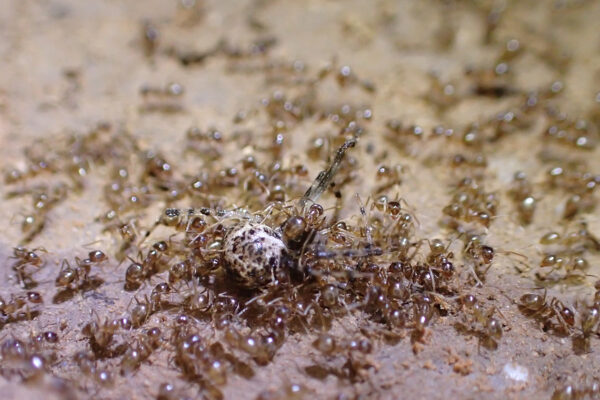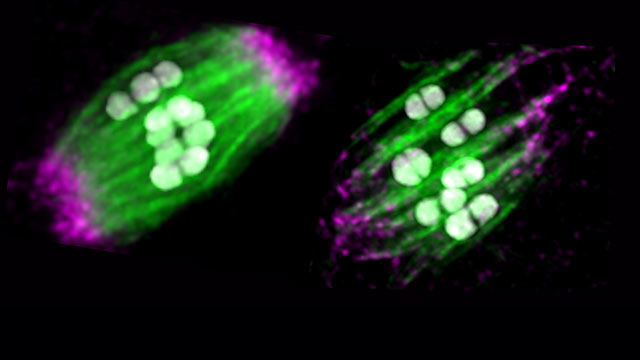2022-03-28 テキサス大学オースチン校(UT Austin)
<関連情報>
- https://news.utexas.edu/2022/03/28/invading-hordes-of-crazy-ants-may-have-finally-met-their-kryptonite/
- https://www.pnas.org/doi/abs/10.1073/pnas.2114558119
侵入した社会性昆虫における病原体を介した自然および操作による個体群の崩壊 Pathogen-mediated natural and manipulated population collapse in an invasive social insect
Edward G. LeBrun , Melissa Jones, Robert M. Plowes , and Lawrence E. Gilbert
journal Proceedings of the National Academy of Sciences
Published:March 28, 2022
DOI:https://doi.org/10.1073/pnas.2114558119

Tawny crazy ants swarm on a cobweb spider. Credit: Mark Sanders.
Abstract
Boom-bust population dynamics are a recurrent, widespread, and typically unexplained property of many species invasions. Declines also occur in invasive social insects from unknown causes. Nevertheless, social insects have proved intractable to biological control. Tawny crazy ants, an environmentally damaging invasive pest in several countries globally, are spreading in North America. Examining 15 local populations spanning 9 y, we document both the collapse of local populations of this ant in North America and a strong association of collapse with infection by the microsporidian pathogen, Myrmecomorba nylanderiae. Over the observation period, all longitudinally sampled local populations that harbored the pathogen declined, with 62% of these populations disappearing entirely. We test the causality of this relationship by introducing this pathogen into two local populations. At both sites, within 7 mo the pathogen was nearly universally prevalent, and within 2 y, tawny crazy ants were eliminated. In contrast, uninfected populations showed no tendency to decline over a similar period. Concurrent laboratory studies indicate that colony fragments died out because infected workers do not survive long enough to bridge the gap created by normal, winter cessation of immature ant production. Population-level collapse occurred because the pathogen spread faster than colony fragments declined, eliminating the density-dependent regulation seen with many pathogens. Invasive species beset by such pathogens may collapse if factors favoring transmission, like genetic homogeneity, high population density, or socially facilitated intragroup transmission, allow virulent pathogens to spread widely before disease impacts occur. These invasive species may be susceptible to boom-bust dynamics and pathogen-driven local extinction.


